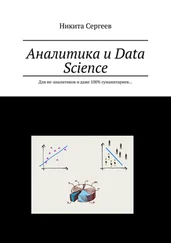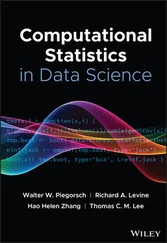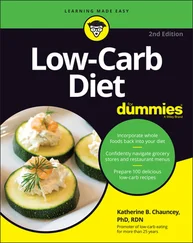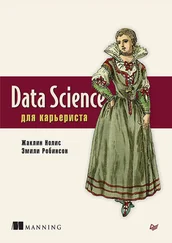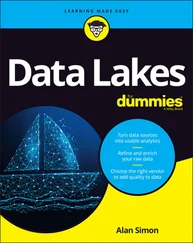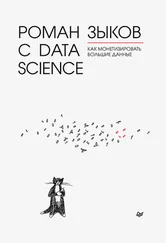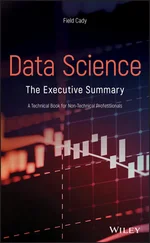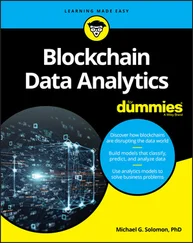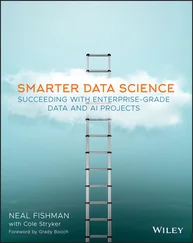Who can use data science? You can. Your organization can. Your employer can. Anyone who has a bit of understanding and training can begin using data insights to improve their lives, their careers, and the well-being of their businesses. Data science represents a change in the way you approach the world. When determining outcomes, people once used to make their best guess, act on that guess, and then hope for the desired result. With data insights, however, people now have access to the predictive vision that they need to truly drive change and achieve the results they want.
Here are some examples of ways you can use data insights to make the world, and your company, a better place:
Business systems: Optimize returns on investment (those crucial ROIs) for any measurable activity.
Marketing strategy development: Use data insights and predictive analytics to identify marketing strategies that work, eliminate under-performing efforts, and test new marketing strategies.
Keep communities safe: Predictive policing applications help law enforcement personnel predict and prevent local criminal activities.
Help make the world a better place for those less fortunate: Data scientists in developing nations are using social data, mobile data, and data from websites to generate real-time analytics that improve the effectiveness of humanitarian responses to disaster, epidemics, food scarcity issues, and more.
Inspecting the Pieces of the Data Science Puzzle
To practice data science, in the true meaning of the term, you need the analytical know-how of math and statistics, the coding skills necessary to work with data, and an area of subject matter expertise. Without this expertise, you might as well call yourself a mathematician or a statistician. Similarly, a programmer without subject matter expertise and analytical know-how might better be considered a software engineer or developer, but not a data scientist.
The need for data-informed business and product strategy has been increasing exponentially for about a decade now, thus forcing all business sectors and industries to adopt a data science approach. As such, different flavors of data science have emerged. The following are just a few titles under which experts of every discipline are required to know and regularly do data science: director of data science-advertising technology, digital banking product owner, clinical biostatistician, geotechnical data scientist, data scientist–geospatial and agriculture analytics, data and tech policy analyst, global channel ops–data excellence lead, and data scientist–healthcare.
Nowadays, it’s almost impossible to differentiate between a proper data scientist and a subject matter expert (SME) whose success depends heavily on their ability to use data science to generate insights. Looking at a person’s job title may or may not be helpful, simply because many roles are titled data scientist when they may as well be labeled data strategist or product manager, based on the actual requirements. In addition, many knowledge workers are doing daily data science and not working under the title of data scientist. It’s an overhyped, often misleading label that’s not always helpful if you’re trying to find out what a data scientist does by looking at online job boards. To shed some light, in the following sections I spell out the key components that are part of any data science role, regardless of whether that role is assigned the data scientist label.
Collecting, querying, and consuming data
Data engineers have the job of capturing and collating large volumes of structured, unstructured, and semi structured big data — an outdated term that’s used to describe data that exceeds the processing capacity of conventional database systems because it’s too big, it moves too fast, or it lacks the structural requirements of traditional database architectures. Again, data engineering tasks are separate from the work that’s performed in data science, which focuses more on analysis, prediction, and visualization. Despite this distinction, whenever data scientists collect, query, and consume data during the analysis process, they perform work similar to that of the data engineer (the role I tell you about earlier in this chapter).
Although valuable insights can be generated from a single data source, often the combination of several relevant sources delivers the contextual information required to drive better data-informed decisions. A data scientist can work from several datasets that are stored in a single database, or even in several different data storage environments. At other times, source data is stored and processed on a cloud-based platform built by software and data engineers.
No matter how the data is combined or where it’s stored, if you’re a data scientist, you almost always have to query data — write commands to extract relevant datasets from data storage systems, in other words. Most of the time, you use Structured Query Language (SQL) to query data. ( Chapter 7is all about SQL, so if the acronym scares you, jump ahead to that chapter now.)
Whether you’re using a third-party application or doing custom analyses by using a programming language such as R or Python, you can choose from a number of universally accepted file formats:
Comma-separated values (CSV): Almost every brand of desktop and web-based analysis application accepts this file type, as do commonly used scripting languages such as Python and R.
Script: Most data scientists know how to use either the Python or R programming language to analyze and visualize data. These script files end with the extension .ply or .ipynb (Python) or .r (R).
Application: Excel is useful for quick-and-easy, spot-check analyses on small- to medium-size datasets. These application files have the .xls or .xlsx extension.
Web programming: If you're building custom, web-based data visualizations, you may be working in D3.js — or data-driven documents, a JavaScript library for data visualization. When you work in D3.js, you use data to manipulate web-based documents using .html, .svg, and .css files.
Applying mathematical modeling to data science tasks
Data science relies heavily on a practitioner's math skills (and statistics skills, as described in the following section) precisely because these are the skills needed to understand your data and its significance. These skills are also valuable in data science because you can use them to carry out predictive forecasting, decision modeling, and hypotheses testing.
 Mathematics uses deterministic methods to form a quantitative (or numerical ) description of the world; statistics is a form of science that’s derived from mathematics, but it focuses on using a stochastic (probabilities) approach and inferential methods to form a quantitative description of the world. I tell you more about both in Chapter 4. Data scientists use mathematical methods to build decision models, generate approximations, and make predictions about the future. Chapter 4presents many mathematical approaches that are useful when working in data science.
Mathematics uses deterministic methods to form a quantitative (or numerical ) description of the world; statistics is a form of science that’s derived from mathematics, but it focuses on using a stochastic (probabilities) approach and inferential methods to form a quantitative description of the world. I tell you more about both in Chapter 4. Data scientists use mathematical methods to build decision models, generate approximations, and make predictions about the future. Chapter 4presents many mathematical approaches that are useful when working in data science.
 In this book, I assume that you have a fairly solid skill set in basic math — you will benefit if you’ve taken college-level calculus or even linear algebra. I try hard, however, to meet readers where they are. I realize that you may be working based on a limited mathematical knowledge (advanced algebra or maybe business calculus), so I convey advanced mathematical concepts using a plain-language approach that’s easy for everyone to understand.
In this book, I assume that you have a fairly solid skill set in basic math — you will benefit if you’ve taken college-level calculus or even linear algebra. I try hard, however, to meet readers where they are. I realize that you may be working based on a limited mathematical knowledge (advanced algebra or maybe business calculus), so I convey advanced mathematical concepts using a plain-language approach that’s easy for everyone to understand.
Читать дальше
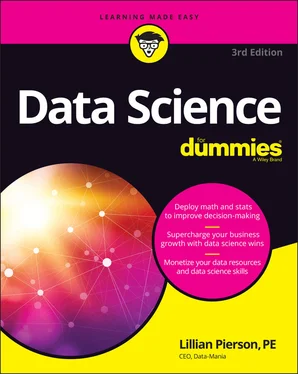
 Mathematics uses deterministic methods to form a quantitative (or numerical ) description of the world; statistics is a form of science that’s derived from mathematics, but it focuses on using a stochastic (probabilities) approach and inferential methods to form a quantitative description of the world. I tell you more about both in Chapter 4. Data scientists use mathematical methods to build decision models, generate approximations, and make predictions about the future. Chapter 4presents many mathematical approaches that are useful when working in data science.
Mathematics uses deterministic methods to form a quantitative (or numerical ) description of the world; statistics is a form of science that’s derived from mathematics, but it focuses on using a stochastic (probabilities) approach and inferential methods to form a quantitative description of the world. I tell you more about both in Chapter 4. Data scientists use mathematical methods to build decision models, generate approximations, and make predictions about the future. Chapter 4presents many mathematical approaches that are useful when working in data science.![Роман Зыков - Роман с Data Science. Как монетизировать большие данные [litres]](/books/438007/roman-zykov-roman-s-data-science-kak-monetizirova-thumb.webp)
